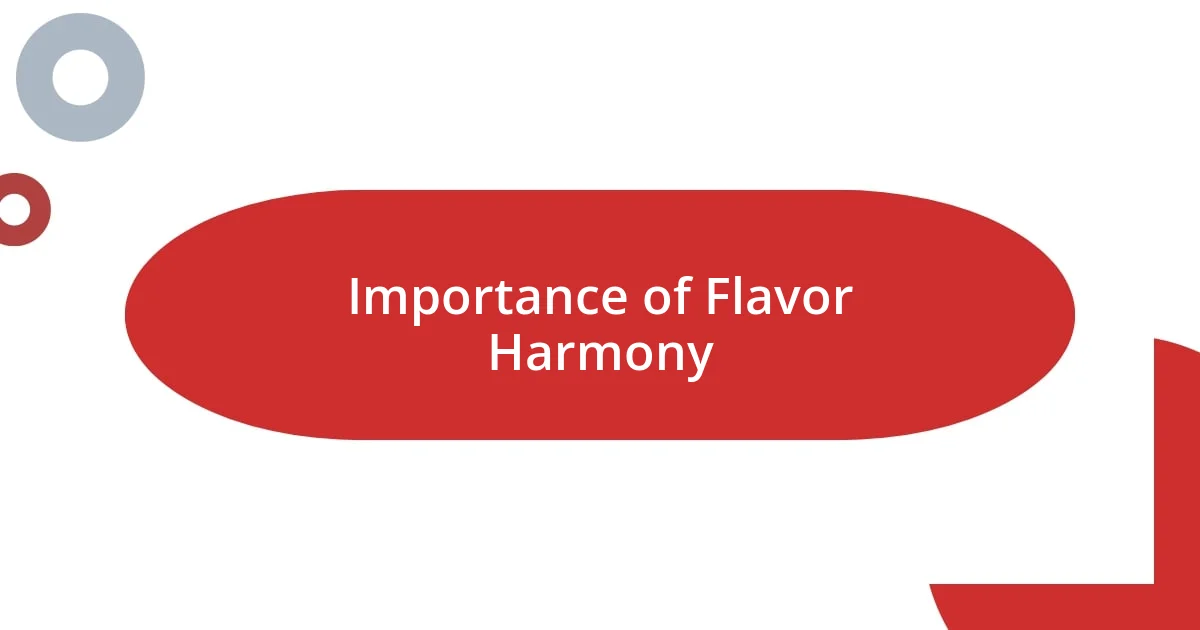Key takeaways:
- Sake can elevate Thai cuisine by complementing or contrasting flavors, enhancing the overall dining experience.
- Finding flavor harmony between sake and Thai dishes—like pairing umami-rich sake with spicy food—creates memorable culinary moments.
- Serving sake at the right temperature and using appropriate glassware can significantly enhance the appreciation of both the beverage and the paired food.

Introduction to Sake Pairing
Sake pairing can feel like an adventure in flavors, almost like creating a culinary masterpiece. I remember my first attempt at pairing sake with food; I nervously selected a floral junmai ginjo for a spicy Thai curry, and the explosion of flavors left me pleasantly surprised. It’s fascinating how the delicate notes of sake can complement or contrast with the vibrant spices found in Thai cuisine.
Have you ever noticed how certain beverages can transform a meal? With sake, it’s not just about the drink but how its rice-based elegance can elevate the experience of every bite. For instance, I once enjoyed a crisp daiginjo alongside a tangy papaya salad, and the refreshing contrast made each spoonful sing. The right sake can enhance the sensations of both heat and sweetness, making your taste buds dance.
As I delve deeper into the art of sake pairing, I’ve learned that understanding the basic flavor profiles can open up a world of possibilities. Sake ranges from dry to sweet, and each type interacts differently with foods. Have you ever considered how a rich, umami-loaded sake can balance a dish with a hint of acidity? Exploring these pairings, I find, isn’t just about the drink or food; it’s about the stories we create with each sip and bite along the way.

Importance of Flavor Harmony
Finding the right balance in flavors is critical when it comes to enjoying sake with Thai food. I recall a time when I paired a rich, earthy sake with a fragrant Thai basil stir-fry; the umami flavor created a surprisingly harmonious experience. It’s amazing how ingredients can interact, creating not just a meal but a delightful symphony of taste.
When we talk about flavor harmony, we’re addressing the need for complementary contrasts. My experience with pairing sake fermented with floral notes alongside a spicy green curry was enlightening; instead of competing, they danced together, each enhancing the other. This kind of synergy doesn’t just tickle the palate; it creates an unforgettable experience that lingers long after the meal.
Understanding the essence of flavor harmony can elevate any culinary adventure. Take it from me—experimenting with different sake types, like a crisp nigori with a mango sticky rice dessert, not only heightened sweetness but also added depth to the dish. There’s something truly magical about discovering how these flavor profiles can converge, creating moments that feel both familiar and new.
| Flavor Aspect | Examples |
|---|---|
| Umami | Rich, earthy sake with basil stir-fry |
| Contrasting Heat | Floral sake with spicy green curry |
| Sweetness Balance | Crisp nigori with mango sticky rice |

Thai Dishes and Sake Types
When I think about how certain Thai dishes can complement various sake types, I’m reminded of my experience with panang curry. The rich coconut milk and aromatic spices paired beautifully with a soft, fruity junmai sake. It was one of those moments when each sip felt like I was discovering new layers of flavor that I hadn’t fully appreciated before.
Here’s a quick roundup of some memorable pairings I’ve experienced:
- Spicy Thai Basil Chicken: A crisp and dry ginjo sake cuts through the heat and balances the dish nicely.
- Tom Yum Soup: The lively acidity in a fruity daiginjo highlights the sourness of the soup, adding a refreshing element.
- Green Curry: A slightly sweet nigori sake eases the chili heat while accentuating the creaminess of the coconut.
- Pad Thai: A floral junmai can bring out the complex flavors, offering a delightful contrast to the soy and tamarind.
Each pairing left me feeling exhilarated, as if I had unlocked a secret to experiencing these dishes in a brand-new way.

Sweetness in Thai Cuisine
Sweetness plays a delightful role in Thai cuisine, offering a counterbalance to the intensity of spice and acidity. I remember devouring a bowl of pad see ew, the smoky stir-fried noodles coated in a sweet soy sauce, and thinking how the sweetness wrapped around each bite, creating a comforting embrace. Isn’t it fascinating how certain flavors can evoke such warmth?
Take, for instance, the ubiquitous mango sticky rice. I’ve encountered instances where the luscious sweetness of ripe mango paired with the richness of coconut milk transcended mere taste—it became a moment to savor. The way those flavors mingle evokes a sense of nostalgia, reminding me of sun-soaked afternoons spent with friends. Don’t you agree that food can transport us to special times and places?
The interplay of sweetness in dishes like tom kha gai, with its delicate balance of coconut cream and tangy lime, strikes me as nothing short of artful. I often find myself preferring this playful sweetness, as it tames any aggressive flavors while allowing the dish to shine. It’s a beautiful reminder that in the landscape of Thai cuisine, sweetness doesn’t just exist; it harmonizes and elevates the entire experience.

Recommended Sake for Spicy Dishes
When it comes to pairing sake with spicy dishes, there’s something truly captivating about how the right choice can elevate the meal. I vividly remember sitting at a bustling Thai restaurant, trying the fiery red curry while sipping on a cold, dry junmai. The way the sake complemented the dish was astonishing; the warm spices became less aggressive, allowing me to truly appreciate the dish’s complexity. Have you ever had that magical moment where a drink makes the food feel like a symphony?
I’ve also experimented with ginjo sake alongside spicy larb, a zesty meat salad. The clean, refreshing finish of the ginjo cut through the heat in such a delightful way. It felt as if each sip was a gentle wave washing over my palate, providing a break from the spiciness. Isn’t it interesting how a well-paired beverage can enhance your dining experience to the point where you’re left thinking about it long after the meal is over?
One of my favorite pairings has been with spicy green papaya salad. A floral daiginjo crafted from high-quality rice served as the perfect counterbalance, showcasing the vibrant flavors without overwhelming my senses. I recall savoring each bite while relishing the way the sake opened up new dimensions of taste, leaving me with a light, happy feeling. It’s amazing how the right pairing can transform an already delicious dish into something truly memorable, wouldn’t you agree?

Techniques for Sake Serving
Serving sake is an experience that can truly enhance your enjoyment of both the beverage and the food it’s paired with. I remember my first encounter with a traditional tokkuri, a flask specifically designed for sake. Serving hot sake from a tokkuri into small ochoko cups felt almost ceremonial, creating a warm atmosphere that begged me to linger longer at the table. Isn’t it lovely how sometimes the presentation can make a moment feel even more special?
Temperature plays a critical role in sake serving. Did you know that different types of sake shine at varying temperatures? For instance, I’ve discovered that vibrant ginjo sake is best enjoyed chilled, which brings out its fruity notes and refreshing finish. On the contrary, a rich and full-bodied junmai is at its best when slightly warmed. It astonishes me how altering the temperature alters the entire tasting experience. Have you found that to be true with other beverages?
The glassware you choose can also impact the sake experience profoundly. I once sipped saké from a beautiful hand-painted ceramic cup, and I felt a connection to the craftsmanship that went into both the drink and the vessel. It made me appreciate the nuances even more, and I often ponder the stories behind each piece of glassware. Have you ever thought about how the way we serve drinks changes our perception of them? It opens a whole new layer of enjoyment that I highly recommend exploring.

Personal Experiences with Pairing
Pairing sake with Thai dishes has become an exciting journey for me. I remember a vibrant family dinner where I decided to introduce a friend to the world of sake with some gorgeous green curry. We poured a glass of nigori, a cloudy sake, and its creamy texture mirrored the rich coconut milk in the dish perfectly. It was enlightening to witness how the sweetness of the sake softened the curry’s heat, turning our meal into a delightful adventure. Have you ever tried a pairing that brought a whole new perspective to a beloved dish?
Another unforgettable experience was exploring a flight of sake while enjoying a spicy tom yum soup. I selected a fruity namazake, which is unpasteurized and offered a vibrant character. As I took my first sip, the intense spices of the soup danced with the sake’s freshness, creating a burst of flavors that tingled my senses. I couldn’t help but smile, feeling almost as if the two were meant to be together. Isn’t it fascinating how one sip can change your entire perception of a dish?
Diving into dessert, I once tried pairing sake with mango sticky rice. I chose a sweet, dessert-style sake that was luscious and fragrant. The balance was heavenly; the sweetness harmonized with the mango’s natural sugars while enhancing the dish’s subtle textures. I remember the satisfaction of that moment, as if I had stumbled upon a hidden treasure waiting to be discovered. Have you ever had dessert that felt like a warm embrace long after the last bite? That’s the joy of experimenting with pairings!















